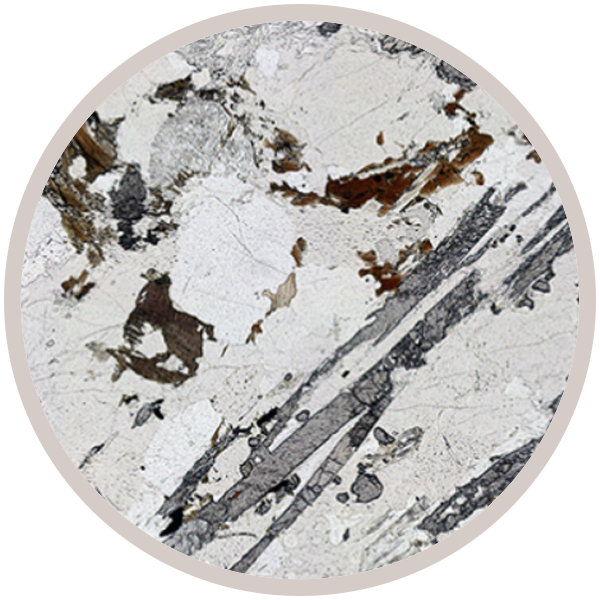This is a test modal
dsfkljsd sdkl jlksdj flksjdfk

Pelitic gneiss with kyanite replacing sillimanite. This rock is part of the Slishwood Division, a Neoproterozoic metasedimentary sequence deposited after c. 926 Ma. The Slishwood Division structurally underlies adjacent Dalradian rocks and records high pressure granulite- and eclogite-facies metamorphism and later magmatism that are not present within the adjacent Dalradian rocks. This unique rock show that the Slishwood rocks cooled slowly at a high pressure and temperature for kyanite to pseudomorph sillimanite,
Rotation 1 - Sillimanite XPL has second order colours and straight extinction. Kyanite has first order inclined extinction.
Rotation 2 - Lovely quartz strain shadows and kyanite showing two cleavages, extinction straight to dominant cleavage.
A group of iCRAG members (UCC, TCD, NUIG and UCD) in partnership with The Open University have created a new collection of Irish rocks and associated learning materials for the Virtual Microscope of Earth Sciences.
The project which is entitled 'The Geoscience e-Laboratory (GeoLab): Developing Digital Teaching and Learning Resources for the Virtual Microscope' seeks to develop open access teaching resources in the form of interactive exercises and assessment rubrics for the Virtual Microscope. Find out more about the project at the GeoLab website.
The Collection was created using funding from the Faculty of Engineering, Mathematics and Science at Trinity College, Dublin, and the National Forum Teaching and Learning Enhancement Fund. One sample (Merensky Reef) showcasing x-ray element maps in addition to the usual PPL/XPL/REF images was funded by Prof. Balz Kamber's MetalIntelligence EU training network grant.